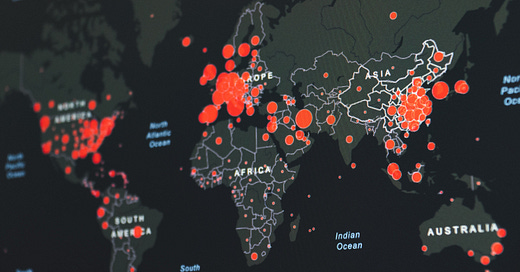Dr. Maureen Manning
Boston, USA
With the closing of borders, ongoing challenges with obtaining visas, and economic and political turmoil, the COVID-19 pandemic has changed the face of international education, perhaps permanently.
Thus, scholar practitioners are considering what the new era of international exchange may look like next academic year and beyond.
Several trends in the field are gaining momentum and are influencing the programming offered to students seeking international connections, collaboration, and increased intercultural competence:
COIL
Pioneered over 15 years ago by faculty at the State University of New York, Collaborative Online International Learning (COIL) pairs learners and educators from different countries to participate in online collaborative learning experiences, such as joint research, projects, and presentations.
COIL offers students opportunities to forge connections with international peers via technology, and to increase their global competency without additional costs that traditional exchange programs require.
As university leaders seek to ensure that internationalization is thriving on campus, COIL provides this in a cost-effective and efficient manner.
VIRTUAL REALITY
VR is increasingly being infused into the educational landscape, including in the realm of international education.
VR is a low-cost way for students to experience virtual field trips abroad.
For example, students in language, history, or cultural classes are offered a realistic experience of sites across the world that can enhance their understanding and appreciation of the material. From climbing the Great Wall of China, to watching the Running of the Bulls in Spain, learners can be transported to other countries and exposed to other cultures in seconds.
From taking virtual walks through the Louvre, to exploring the Great Barrier Reef, VR is transporting learners through time and space to participate in micro-experiences.
Although VR is an individualistic experience lacking in actual human connection, research indicates that implementing VR within a learning portfolio can be transformative.
HYBRID
Hybrid exchanges involve a combination of learning on the home campus as well as spending a brief amount of time at a host institution abroad.
This may involve students registering for a semester-long course at their primary institution, in which they learn about a selected host country, including the language, culture, and geo-political landscape. This is followed by an abbreviated experience abroad, often as short as a two-week program. In fall semester courses, students dig deep into myriad aspects of their host country and connect with peers from the host institution via technology.
During the J-term, they participate in a condensed, faculty-led experience abroad. Likewise, spring semester students depart for their host country in the summer after their course ends. These programs, although brief, offer concentrated experiences at a fraction of the cost of traditional semester- or year-long exchanges, thus helping to close the opportunity gap.
With the increasing popularity of these non-traditional forms of international exchange, not only does it address many issues brought on by the pandemic in terms of inability to travel due to governmental restrictions, but also it speaks to a more compelling issue.
The field of international education has long been steeped in issues of equity and access. Critics claim that it is rife with elitism and exclusivity. However, implementing COIL, VR, and hybrid programs into an organizational portfolio of offerings for students can open the doors of access to myriad students for whom international experiences was once not possible.
Utilizing creative design and technology in exchange programs, and rethinking the concept of internationalism to include a broader range of programming, can, indeed, open the windows of the world to students at an exponential rate.
Dr. Maureen Manning
Dr Manning can be contacted via Twitter here and LinkedIn here.
Dr. Maureen Manning is an international presenter, trainer, and keynote speaker on global education, TESOL, intercultural competence, and study abroad programs.
Dr. Manning has worked as an adjunct professor, teacher trainer, and professional development facilitator in the US, Asia, Australia, and Europe, promoting best practices in language acquisition and in strengthening intercultural competencies. She has been a featured speaker at Harvard University, Loyola University’s International Colloquium in Spain, and the Beijing Institute of Graphic Communication, and is a frequent presenter at numerous US conferences each year.
She leads groups of travelers on annual student, faculty-led, and adult international tours and exchange programs and works as an educational consultant to school districts and corporations across the globe. Her most recent articles are published in the American Sociology Association’s Teaching and Learning Matters Journal, Professionals in International Education’s Digest, and USC’s Follow the Leader Journal, with other publications currently in press.
INTERESTED IN INTERNATIONAL EDUCATION?
The Teacher’s Guide is getting around!
Seen here in Thailand with a happy reader - and his new best friend. When we said ‘a companion to your international adventure’ we didn’t quite mean that kind of companion!
Grab a copy to take on your own adventure or listen to a short sample here (4 mins).







